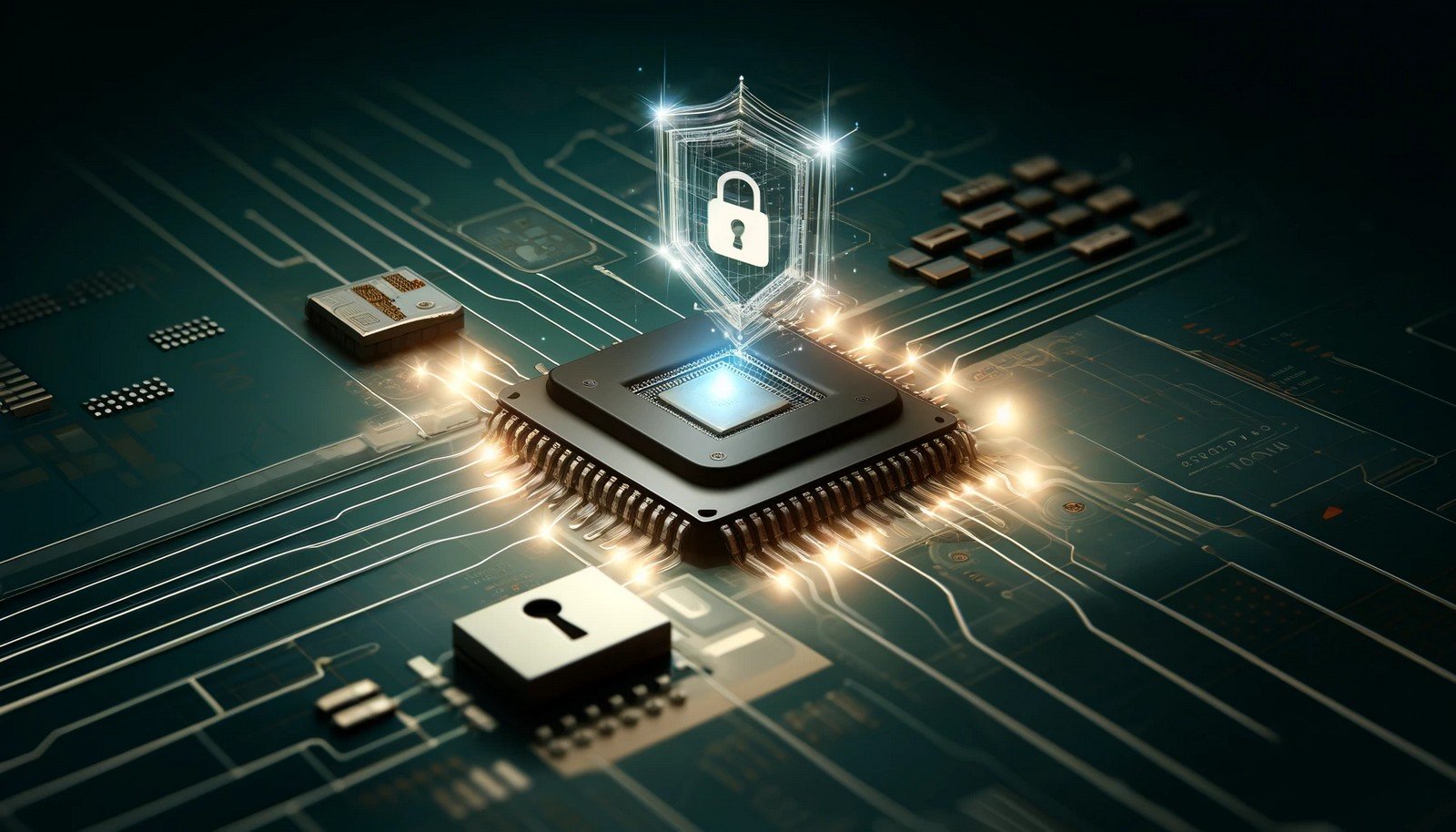FAQ: Comprehensive Guide on Trusted Platform Module (TPM) 2.0 and Windows 11
 (Representational Image | Source: Dall-E)
(Representational Image | Source: Dall-E)
Quick Navigation:
- What is TPM?
- Why is TPM 2.0 Required for Windows 11?
- How Does TPM 2.0 Improve Cryptographic Operations?
- What Are the Key Benefits of TPM 2.0 for Windows 11?
- How Can Users Enable or Verify TPM?
- What Should Be Done If TPM Is Disabled?
- Can Older Systems Be Upgraded to TPM 2.0?
- What Is the Difference Between TPM 1.2 and TPM 2.0?
- How Does TPM Contribute to Secure Boot?
- What Role Does TPM Play in Zero Trust Security?
- What Happens If a TPM Chip Is Damaged?
- How Does TPM Protect Against Ransomware?
- Can TPM 2.0 Be Used in Virtualized Environments?
- How Can TPM Help Ensure Compliance with Security Regulations?
- What Are the Steps to Transition to TPM 2.0?
- Why Is Firmware TPM (fTPM) a Viable Alternative?
- What Are the Long-Term Risks of Disabling TPM?
- How Does TPM Contribute to Enterprise Security?
- What Are the Alternatives for Devices Without TPM?
- Why Is TPM 2.0 Considered Future-Proof?
- What Best Practices Should Be Followed for TPM-Dependent Systems?
What is TPM?
TPM (Trusted Platform Module) is a hardware-based security component embedded into modern motherboards or added as a discrete chip. It ensures secure storage and processing of sensitive data, such as encryption keys, passwords, and certificates. TPM also enables cryptographic operations, such as producing random numbers, encrypting data, and verifying digital signatures.
Why is TPM 2.0 Required for Windows 11?
Windows 11 mandates TPM 2.0 to bolster device security. By integrating with features like Secure Boot and Windows Hello, TPM 2.0 enhances protection against firmware vulnerabilities, ransomware, and unauthorized access, making it indispensable for the modern security landscape.
How Does TPM 2.0 Improve Cryptographic Operations?
TPM 2.0 supports advanced cryptographic algorithms like SHA-256 and AES, which provide better encryption and greater flexibility. This ensures robust defense mechanisms against modern threats, future-proofing systems for emerging security standards.
What Are the Key Benefits of TPM 2.0 for Windows 11?
TPM 2.0 provides:
- Advanced Encryption: Protects sensitive data through robust cryptographic methods.
- Enhanced Identity Security: Features like Windows Hello leverage TPM for secure, password-free authentication.
- Firmware Protection: Prevents tampering with critical boot processes through Secure Boot integration.
- Device Resilience: Protects against keylogging, credential harvesting, and firmware-based attacks.
How Can Users Enable or Verify TPM?
To enable TPM:
- Access BIOS/UEFI during system startup.
- Locate the TPM settings (may appear as "TPM," "PTT," or "fTPM").
- Enable the feature and save changes.
To verify TPM:
- Press
Win + R, typetpm.msc, and press Enter. - View the status and version in the TPM Management Console.
What Should Be Done If TPM Is Disabled?
Disabling TPM can compromise system security, disabling features like Secure Boot and BitLocker encryption. Users are advised to enable TPM to maintain optimal security and compatibility with Windows 11 features.
Can Older Systems Be Upgraded to TPM 2.0?
Yes, provided the motherboard supports TPM headers. Users can purchase compatible TPM modules, install them, and enable TPM in BIOS. Firmware-based TPM (fTPM) can also be enabled on some systems as an alternative.
What Is the Difference Between TPM 1.2 and TPM 2.0?
TPM 2.0 differs from TPM 1.2 in several key areas:
- Cryptographic Support: TPM 1.2 supports only SHA-1, while TPM 2.0 supports SHA-256 and AES.
- Platform Independence: TPM 2.0 supports PCs, IoT devices, and mobile platforms, unlike TPM 1.2.
- Future-Readiness: TPM 2.0 includes modular architecture for updates and supports virtualization.
How Does TPM Contribute to Secure Boot?
Secure Boot validates the integrity of the operating system during startup. TPM ensures that only trusted software runs by securely storing cryptographic keys used for verification.
What Role Does TPM Play in Zero Trust Security?
TPM is a cornerstone of Zero Trust security strategies, enabling hardware-based device attestation and secure identity management. It ensures continuous verification of device integrity, reducing risks of unauthorized access.
What Happens If a TPM Chip Is Damaged?
If a TPM chip fails, data protected by features like BitLocker encryption may become inaccessible without the recovery key. Users should back up recovery keys securely to mitigate risks.
How Does TPM Protect Against Ransomware?
TPM secures encryption keys used by features like BitLocker, ensuring that even if ransomware compromises a device, encrypted data remains inaccessible without proper authentication.
Can TPM 2.0 Be Used in Virtualized Environments?
Yes, TPM 2.0 supports virtual TPMs (vTPMs), enabling secure cryptographic processes in cloud and virtualization scenarios. This is critical for enterprise deployments in modern computing environments.
How Can TPM Help Ensure Compliance with Security Regulations?
By supporting advanced encryption and secure authentication, TPM helps organizations meet regulatory requirements like GDPR and HIPAA, ensuring secure handling of sensitive data.
What Are the Steps to Transition to TPM 2.0?
Transitioning to TPM 2.0 involves:
- Assessing current hardware for TPM compatibility.
- Planning and budgeting for necessary upgrades.
- Enabling TPM in BIOS or deploying compatible TPM modules.
- Training team members on TPM functionality and benefits.
Why Is Firmware TPM (fTPM) a Viable Alternative?
Firmware TPM (fTPM) is a software-based implementation of TPM functionality within the CPU. It provides similar security benefits without requiring additional hardware, making it suitable for many modern devices.
What Are the Long-Term Risks of Disabling TPM?
Disabling TPM exposes systems to risks such as data breaches, reduced security against firmware attacks, and inability to use features like BitLocker and Windows Hello. Long-term compliance with evolving standards may also be jeopardized.
How Does TPM Contribute to Enterprise Security?
In enterprises, TPM ensures secure device attestation, protects against credential theft, and facilitates compliance with stringent data protection standards, making it essential for managing sensitive information.
What Are the Alternatives for Devices Without TPM?
Alternatives for devices without TPM include:
- Use Firmware TPM (fTPM): Enable via BIOS if available.
- Upgrade to TPM-Compatible Systems: Ensures long-term security and compatibility.
- Workarounds: Temporary bypasses exist but are not recommended for security-critical systems.
Why Is TPM 2.0 Considered Future-Proof?
TPM 2.0 is designed to adapt to emerging cryptographic algorithms and integrates seamlessly with AI, IoT, and cloud technologies. Its modular design ensures compatibility with future security standards.
What Best Practices Should Be Followed for TPM-Dependent Systems?
Best practices include:
- Regularly monitoring TPM health and functionality.
- Backing up recovery keys securely.
- Enabling multifactor authentication to complement TPM-based security features.
We made FaqGuru.com to simplify understanding through FAQs. If you have questions, please reach out to us on WhatsApp or Twitter.Authors | Arjun Vishnu | @ArjunAndVishnu

I am Vishnu. I like AI, Linux, Single Board Computers, and Cloud Computing. I create the web & video content, and I also write for popular websites.
My younger brother, Arjun handles image & video editing. Together, we run a YouTube Channel that's focused on reviewing gadgets and explaining technology.
Comments powered by CComment